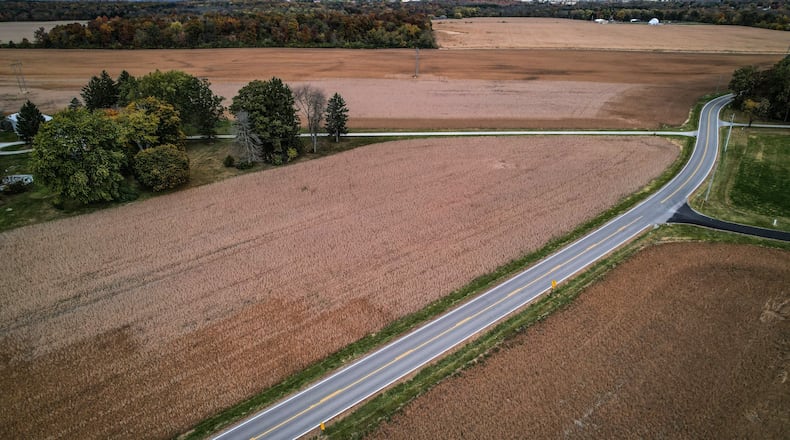“It’s a vision that we’ve drafted for the next 20 years on how different areas of the county should be essentially either developed, redeveloped or preserved,” said Regional Planning Executive Director DeAndra Navratil.
Perspectives 2040 is not legally binding, officials said, but it does give local governments something to reference when considering the future of their townships. Ultimately, township governments have the final say on what actually becomes policy in their jurisdiction, officials said. The drafting process started at the beginning of 2020.
Some communities remain fairly static for decades, while others can go through rapid change. One example is near Columbus, as some quiet rural areas will get complete makeovers as Intel builds huge computer chip factories in the coming years.
Solar a major topic
One of the biggest changes is providing local governments with guidance for developing large scale alternative energy centers. Last year, the Greene County Commission made modifications to their Perspectives 2020 document, originally developed at the turn of the millennium, to address large-scale solar development, after a proposed solar power generating facility, Kingwood Solar, generated community backlash.
“When that was developed in the 2000s, large utility-scale solar projects were not something that was on anyone’s radar,” Navratil said.
Now, solar development is one of the most asked-about topics at the county level, she added. Ohio House Bill 52, which went into effect last October, gives local governments more say in the siting and zoning of wind and solar farms in their jurisdictions. One of the strategies in Perspectives 2040 is developing proper zoning regulations for those facilities, as well as monitoring their effectiveness.
Other key issues
Other major goals include protecting farmland and the county’s natural resources, revitalizing existing communities, focus on balancing land development with maintaining rural character, expanding and diversifying the local economy, and enhancing residents’ quality of life.
Strategies for this include updating zoning codes to support exclusive agricultural zones, as well as funding and supporting conservation programs and easements, documents show.
County officials noted there are a number of under-utilized spaces and buildings which are “ripe for reuse or repurposing,” per county documents, but there are challenges associated with bringing older buildings up to modern standards. County redevelopment efforts would focus on using these existing spaces, rather than continuing to expand development.
Other strategies include streamlining the business start-up process, in order to to encourage creation of smaller and locally owned businesses. The county would also work with colleges and universities to keep graduates local, documents show.
Also baked into the Perspectives 2040 plan is a review of the document every five years, to ensure it keeps up with the times, Navratil said.
“We want to make sure this is a living document,” she said.
What happens next?
The public comment period ends Oct. 24, but that deadline may be extended, commissioners said Thursday. The Regional Planning Commission will then take that feedback and update their goals, and next steps will be detailed online, Navratil said.
The survey link, as well as detailed information on the goals and strategies can be found on the planning commission’s website.
“We really hope people want to take (the survey), as it is an important plan, and we’re trying to make sure we get as many people as possible to participate,” Navratil said.
About the Author


